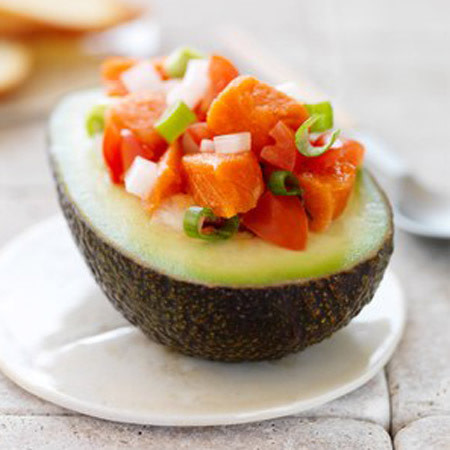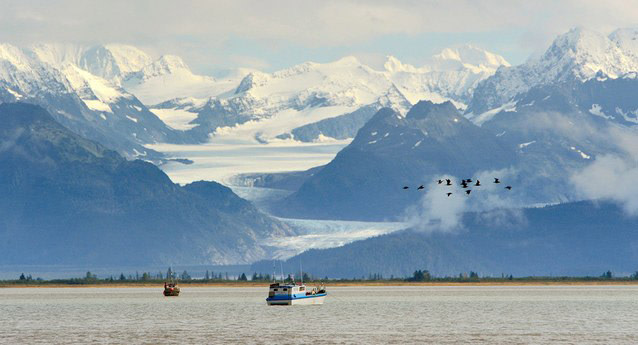Copper River Salmon Are Here

Meeting of the super-foods: avocado stuffed with fresh, wild, sustainably-caught Copper River salmon.
We can make fun of Portlanders’ tendency to want to know all about the heritage and upbringing of everything they eat (cue Portlandia skit about Colin the chicken), but in many cases, such concern is neither silly nor pretentious but rather quite reasonable. For instance, with fish, it’s smart to be aware of mercury or PCBs that might be harbored in your catch. How the fish were raised has to do with not just “were they talked to sweetly?” and “did they have a lot of clean water to swim around in?” but also “are there enough fish left that they’re not being caught to extinction?”
With Copper River salmon, the answer to these questions is “yes,” so you can relax. The much-touted Alaskan salmon are sustainably caught and come into our kitchens for only a short season each year. Cordova, Alaska, is the headquarters for the Copper River salmon fishing, and the season opened May 16. The first fish arrived on an Alaska Airlines flight to Sea-Tac Airport the very next day – well-documented by photographers and TV crews. The first flight carried almost 25,000 pounds of salmon, and the airline expects to transport about 1,975,000 pounds more before the season is over.

The masterful marketing around the Copper River Salmon began in 1983 when former fisherman Jon Rowley created a "race" to get the first of the spring catch to market.
Copper River salmon are easy to prepare – a quick saute, bake or grill are the most common methods. If you'd like to experiment a bit, try chef Vitaly Paley's instructions for Grilled Cedar Planked Salmon, which entails burning an oil-covered plank on the grill so that the wood burns away. The recipe also includes less pyrotechnic but equally delicious elements such as a citrus marinade and topping during the grilling process with Walla Walla onions. And chef Paley lets us in on a secret: you don't need a special foodie cedar plank; untreated cedar shingles can be purchased at a lumberyard and work just as well.
The river from which these celebrated salmon come is so-named because of the rich copper deposits along its banks. It’s a mile-wide and runs an average of 7 mph; the fish have to swim up that river some 300 miles to their spawning grounds. Such a long trip evidently takes more than the usual stores of omega-3 fatty acids; the heart-healthy oil fuels the fish’s swim upstream.
The earlier the fish is caught on his journey, the richer it will taste to us humans. And the better it will be for our human hearts and – a particular concern for us Portlanders – our vitamin D levels, because Omega-3s pack a good dose of Doctor D as well.
